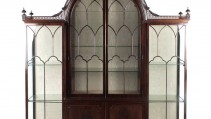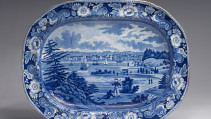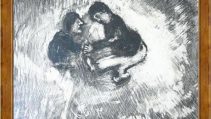By TOM MASHBERG OCT. 12, 2015
The artist Eric Fischl remembers the time a friend waved a catalog at him to alert him that one of his paintings was up for auction for six figures in London. In reality, the work was a fake, but so convincing, Mr. Fischl said, “I thought I was losing my mind.”
Brushes with forgery like that one two decades ago, and concerns about his legacy and estate, prompted Mr. Fischl to appear in London on Monday to vouch for a new authentication system that would let artists sign their works with specks of synthetic DNA.
The method is being developed at the Global Center for Innovation at the State University of New York at Albany. The school said it had received $2 million in funding from the ARIS Title Insurance Corporation, which specializes in art.
Two years ago, the center, known for its work in bioengineering, encryption and nanotechnology, set about developing a way to infuse paintings, sculptures and other artworks with complex molecules of DNA created in the lab.
“We wanted a marker that was very hard to locate and not prone to environmental issues or tampering,” Robert J. Jones, president of SUNY Albany, said. Equally important, he added, was that artists would embrace the approach.
Experts say fakes have become one of the most vexing problems in the art market. Scandals like the one involving dozens of forgeries sold through the venerable Knoedler Gallery in Manhattan before it closed in 2011 are sapping the confidence of buyers, owners and artists, they say.
An objective way of marking art would be particularly attractive at a time when reliance on subjective expertise, or connoisseurship, and often-incomplete provenance, seems to be waning. Curators, artists’ foundations and independent experts now often shy away from authenticating works for fear of being sued.
“There is a deep freeze in authentications,” said Colette Loll of Art Fraud Insights, who was a consultant on the project.
But while automobiles, for example, have vehicle identification numbers, works by living artists enter the market without dependable standards of identification.
The new approach, in its formative stage, would implant synthetic DNA, not the personal DNA of the artists, because of privacy issues and because a person’s DNA could conceivably be stolen and embedded, thus undermining the authority of such a marking protocol.
The developers said the bioengineered DNA would be unique to each item and provide an encrypted link between the art and a database that would hold the consensus of authoritative information about the work. The DNA details could be read by a scanner available to anyone in the art industry wanting to verify an object.
Those trying to create the new standard said they had signed up three dozen internationally recognized artists, archives, foundations and museums who want to test the technology, which could be ready as early as next year.
Artists and owners would buy a kind of tag that they could use to apply the DNA. Early estimates by the developers say tags would cost about $150. Once applied, the DNA would penetrate the work at the molecular level, so removing the tag would not eliminate the item’s forensic signature.
We see it as a secure, safe and invisible solution that artists and owners can accept,” said Lawrence M. Shindell, chairman of ARIS, which is based in New York. “Our goal is to remove uncertainty from the market.”
Potential buyers and sellers could also check items for DNA codes to see whether the items had been stolen. Doing so could block their resale by galleries and auctioneers and bring about their recovery, the supporters said.
They said it was crucial that applying the tags have no impact on the work.
Deciphering and replicating the DNA would be all but impossible, according to Mr. Shindell. He said even sophisticated counterfeiters “would leave microscopic forensic evidence” if they tried to remove or replace the DNA.
Mr. Jones said SUNY took on the task as a public service and a possible revenue generator, though those details remain unclear. ARIS said it had no ownership of the technology, but would benefit from the greater transparency and confidence in a $55-billion-a-year market in which it sells insurance.
“It makes a lot of sense for us to be involved given that the state of New York is one of the world’s largest art markets,” Mr. Jones said. “We hope there will be financial benefits from creating the intellectual property and the process becomes a gold standard in the industry.”
Mr. Fischl said he wanted to assure fellow artists that the idea is “a no-brainer” for preventing forgeries of their work from being sold. He added that “authenticating a work from the very start can alleviate the pain and frustration people go through when they think they have something of great value and they really don’t.”
“What’s not sexy about synthetic DNA?” he added.
Source: NY Times





